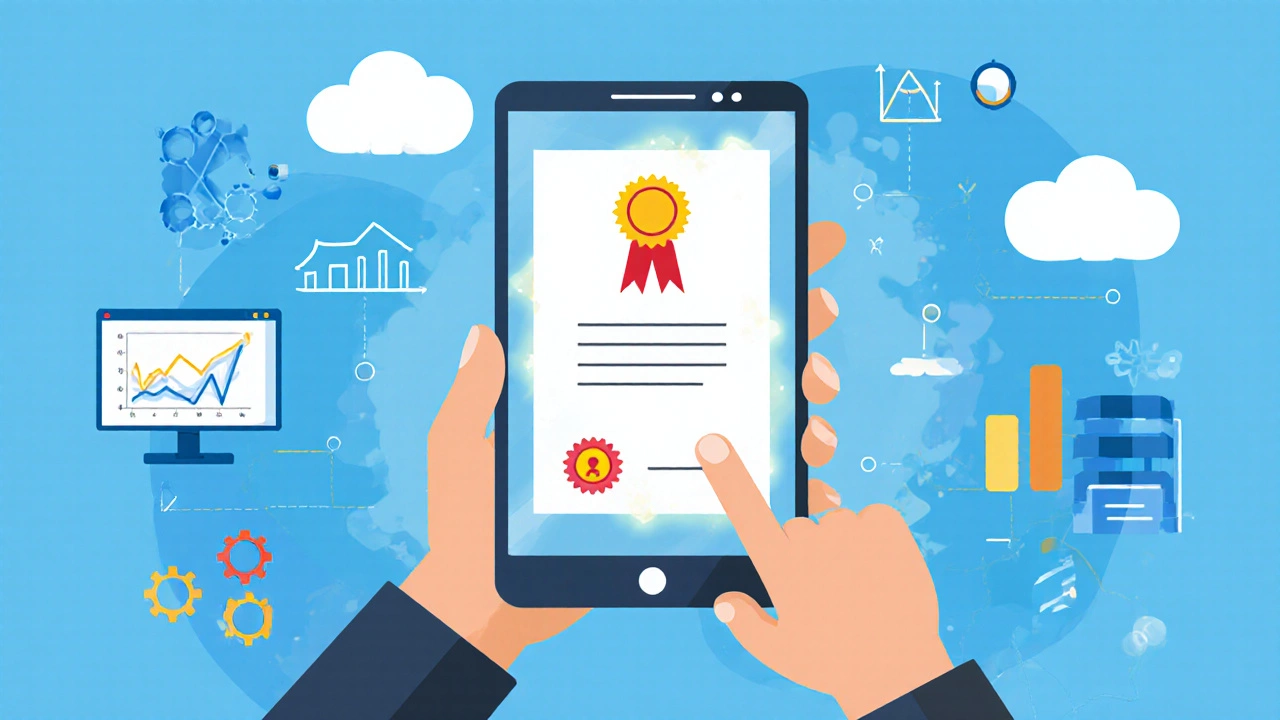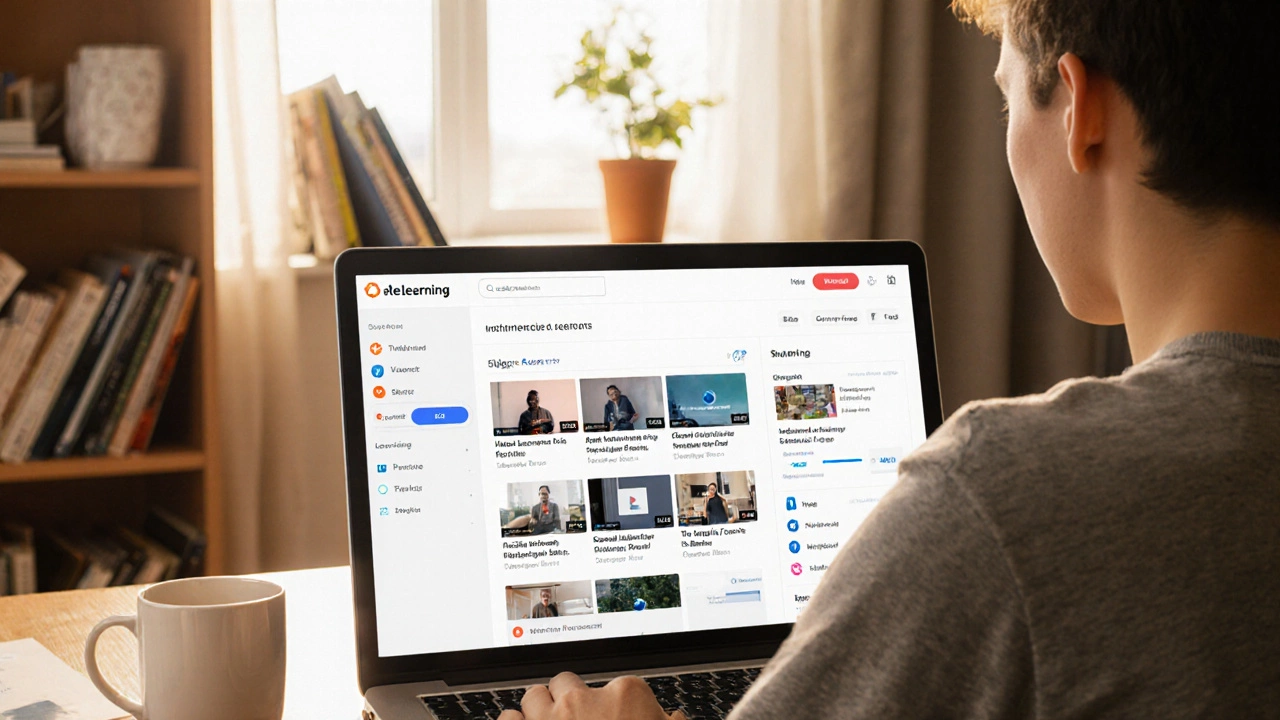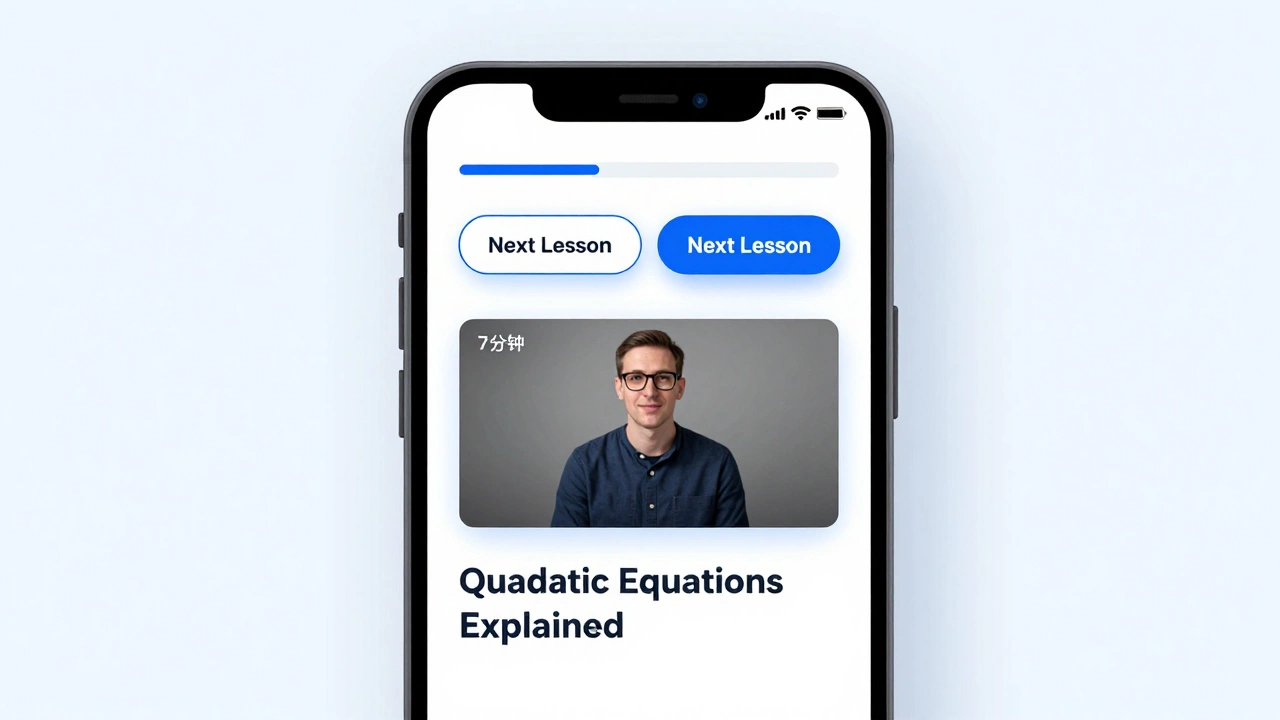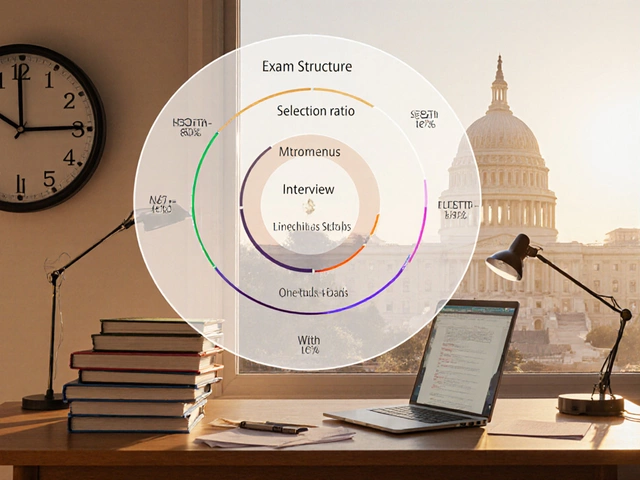eLearning Knowledge Quiz
Test Your Knowledge
Answer these multiple-choice questions to check your understanding of eLearning concepts. Click 'Check Answer' to see if you're right!
Question 1
What is eLearning?
Quick Takeaways
- eLearning delivers education through digital platforms, letting learners study anywhere.
- Key parts include a Learning Management System, multimedia content, and interaction tools.
- Courses can be self‑paced or instructor‑led, often using MOOCs or blended formats.
- Good design follows instructional design principles and tracks progress with learner analytics.
- Choosing the right platform means matching features, budget, and learner needs.
What is eLearning the delivery of educational content via electronic devices and the internet?
When you log into a course portal and start watching a video or taking a quiz, you’re experiencing eLearning. It replaces a physical classroom with a digital space where the same knowledge can be shared, but with far more flexibility. Think of it as the internet’s answer to traditional schooling - you get the same curriculum, just in a format that fits your schedule.
Core Components of an eLearning System
Every effective eLearning setup revolves around a few building blocks. Below we break down the most common ones.
Learning Management System software that hosts courses, tracks progress, and manages users (LMS)
The LMS is the backbone. It stores video lessons, documents, and assessments, while also handling enrollments and certificates. Platforms like Moodle, Canvas, or TalentLMS let administrators create modules, set deadlines, and generate reports.
Massive Open Online Course a large‑scale, often free online class open to anyone (MOOC)
MOOCs made eLearning mainstream. Universities and companies upload full courses on sites such as Coursera or edX. Learners can join without paying, though they may pay for a verified certificate.
SCORM a set of technical standards that ensure eLearning content works across LMSs
SCORM (Sharable Content Object Reference Model) guarantees that a video, quiz, or interactive module runs the same way no matter which LMS you use. It also records completion data back to the LMS.
Blended Learning a hybrid approach that mixes face‑to‑face instruction with online activities
Not every program wants to be fully digital. Blended Learning lets schools keep in‑person labs or discussions while moving lectures online, giving the best of both worlds.
Instructional Design the systematic process of creating effective learning experiences
Good eLearning isn’t just a video uploaded to a server. Instructional designers apply models like ADDIE (Analyze, Design, Develop, Implement, Evaluate) to make sure content matches learning objectives and keeps learners engaged.
Learner Analytics data collection and analysis that reveal how students interact with digital content
Analytics tell you who finished a module, where they got stuck, and how long they spent on each activity. This data drives improvements, personalizes pathways, and helps instructors intervene early.
Gamification the use of game‑like elements such as points, badges, and leaderboards to boost motivation
Adding a badge for completing a quiz or a leaderboard for top scores turns learning into a friendly competition, increasing completion rates.
How Content Is Delivered
Once the components are ready, delivery follows a straightforward flow:
- Upload: Creators add videos, PDFs, SCORM packages, or live‑stream links to the LMS.
- Structure: Content is organized into modules, weeks, or competency blocks.
- Access: Learners log in from any device - laptop, tablet, or smartphone - and see a dashboard with their next steps.
- Interaction: Quizzes, discussion forums, or virtual classrooms keep the experience active.
- Assessment: Automatic grading of quizzes and manual review of assignments feed into the analytics engine.
- Certification: Upon meeting criteria, the LMS issues a digital certificate or badge.
This pipeline works because the web provides instant bandwidth and cloud storage, while the LMS handles the heavy lifting of user management and reporting.
Learner Experience: What You’ll Actually See
From a student’s perspective, an eLearning course feels like a mix of a Netflix binge and a productivity app.
- Home screen: A clean dashboard shows upcoming lessons, progress bars, and any pending assignments.
- Multimedia: Short videos (3‑10 minutes) break concepts into bite‑size pieces, often followed by a quick quiz.
- Interactive labs: Simulations or drag‑and‑drop activities let you apply knowledge without needing physical equipment.
- Community: Discussion threads or live Zoom sessions let you ask questions and hear peer insights.
- Feedback loops: Instant scores and suggestions tell you where to improve before moving on.
All of these elements are powered by the same LMS you saw earlier, which stitches them together into a seamless flow.
Advantages and Challenges of eLearning
Every educational method has pros and cons. Here’s a quick rundown so you can decide if it fits your goals.
| Aspect | eLearning | Traditional Classroom |
|---|---|---|
| Flexibility | Learn anytime, anywhere | Fixed schedule, fixed location |
| Cost | Lower overhead, scalable | Facility and commuting expenses |
| Engagement | Depends on design, can use gamification | Face‑to‑face interaction is natural |
| Assessment | Automated grading, instant analytics | Manual grading, slower feedback |
| Technical Barrier | Requires reliable internet and devices | Minimal tech needed |
When you weigh these factors, the flexibility and data insights of eLearning often outweigh the occasional tech hiccup, especially for adult learners and remote teams.

How to Choose the Right eLearning Platform
Not every LMS suits every organization. Use the following decision matrix to narrow down options.
- Scalability: Can the platform handle 10 users or 10,000?
- Content Standards: Does it support SCORM, xAPI, or LTI for third‑party tools?
- User Experience: Is the UI intuitive for both admins and learners?
- Integration: Can it sync with HR systems, CRM, or video conferencing tools?
- Pricing Model: Subscription per seat, pay‑as‑you‑go, or enterprise licensing?
Run a small pilot with a few courses, gather learner feedback, and compare analytics before committing to a long‑term contract.
Implementation Checklist
- Define learning objectives and target audience.
- Select an LMS that meets technical standards (SCORM, mobile‑ready).
- Develop or curate multimedia content (videos, PDFs, interactive quizzes).
- Apply instructional design principles to structure modules.
- Set up learner analytics dashboards to monitor progress.
- Incorporate gamification elements to boost motivation.
- Run a beta test with a focus group and collect feedback.
- Launch publicly, monitor data, and iterate every quarter.
Following this list helps you avoid common pitfalls like vague objectives, broken SCORM packages, or low engagement.
Frequently Asked Questions
Is eLearning effective for hands‑on subjects like engineering?
Yes, when paired with virtual labs or simulation software. Platforms can embed 3‑D models, remote hardware access, or guided video walkthroughs, giving learners a practical feel without a physical workshop.
Do I need any special technology to start an eLearning course?
At a minimum, a reliable internet connection, a modern web browser, and a device (computer, tablet, or phone) are enough. For content creators, a microphone, webcam, and basic editing software help produce quality materials.
How does learner analytics improve course quality?
Analytics highlight drop‑off points, quiz failures, and time‑on‑task. Instructors can then revise confusing sections, add supplemental resources, or personalize learning paths for struggling students.
Can eLearning be accredited for formal credentials?
Many universities and professional bodies accredit online programs. Make sure the LMS can issue verifiable digital certificates that meet the accrediting body’s standards.
What’s the difference between a MOOC and a traditional online course?
MOOCs are usually open‑access, often free, and serve massive audiences. Traditional online courses are typically smaller, may charge tuition, and provide more direct instructor support and grading.









0 Comments